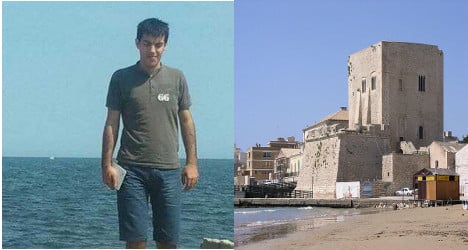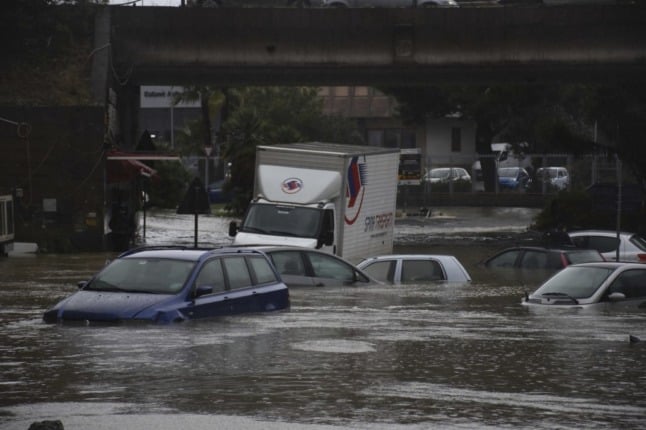It took a week for the parents of Bulgarian Stoyan Zafirova, a computer programmer who lived with his family in Malta, to learn of his death. But then they were hit with more distressing news: he had been buried in a small Sicilian town without their permission.
Stoyan, who would have celebrated his 24th birthday on Wednesday, was hit by a car as he walked along a busy arterial highway in Pozzallo, a seaside town in the province of Ragusa, in the early hours of June 7th.
According to local newspaper reports on June 8th, he was hit by a 50-year-old man from Pozzallo in a Mercedes. Despite efforts to save him, Stoyan died at the scene. Stoyan was also reported to be “homeless”. Police also initially assumed he was an African immigrant due to the "dark colour of his skin" and because he didn’t have any identification documents with him, the reports said.
Speaking to The Local from the family home in Malta, his mother, Zaharinka Zafirova, said she last spoke to her son three days before he died.
“He said everything was fine, he was doing very well,” she said.
“He was staying in an apartment there, so the reports about him being homeless are untrue; he even offered to send money home to us. He left his identification documents at home in Malta, so that's why they didn't find any on him.”
The family only heard about his death a week later, after the Bulgarian Embassy made contact with his grandmother in Bulgaria.
As the family set about making funeral arrangements, the Sicilian authorities said they were unable to bring his body home until a probe into the accident was complete, Zafirova said.
They were also told that travelling to the island was “pointless” as they were unable to see the body pending the investigation.
After more than six distressing weeks, the Zafirovas finally received a letter saying their son’s body was ready to be released. The letter, seen by The Local, was signed by Alessia La Placa, procuror of Modica, the administrative hub of Ragusa, on July 30th.
But as their undertaker in Malta, Joseph Valleta, made plans to bring the body home, the family was shocked to discover that Stoyan had been buried 12 days earlier in a cemetery in Pozzallo.
“He was buried without our permission, they didn’t inform us of anything,” Zafirova said.
Alberto Muccio, the owner of the funeral home that buried Stoyan, said he was told by the local magistrate to bury him because his body had been in the morgue for too long. He claims that neither the family nor their lawyers had made any contact with the magistrate for more than a month.
“The magistrate did what he had to do; we couldn’t keep the body in the morgue for so long. It had already been there for more than 30 days; it’s not good, especially with the heat in Sicily,” Muccio told The Local.
“When I went to see the magistrate to ask what to do, he said to bury him. He said he hadn’t heard anything from the family or their lawyers, we just didn’t know what else to do.”
Muccio added that it was normal practise to bury a body as “quickly as possible”.
When The Local contacted the procuror’s office in Modica, we were told that the magistrate who ordered the burial, a Mr Puleio, was away until the end of August. A person there, who asked not to be named, said this was “the first case of its kind”, but declined to say anymore.
The family hired two lawyers, Alex Perici Calascione in Malta and Francesco Azzarito in Rome.
Azzarito could not be reached by The Local while Calascione declined to comment.
However, Calascione told the family that the lawyers had been in touch with the Modica authorities throughout the process but were also unaware of the burial.
“It’s a strange case,” Tony Fenech, a friend of the family said.
“It seems there might have been a breakdown in communication between the lawyers and the procuror.”
Joseph Valleta, the funeral director working on behalf of the family in Malta, said a 50 percent down-payment would have to be paid to Muccio before he can exhume the body. Total costs are estimated to be more than €3,000.
Muccio said he was ready to do the work, but not a lot could be done right now due to the Ferragosto national holiday, which begins on August 15th, and while the magistrate is away.
He claims he hasn’t heard anything yet from the family’s lawyers.
“We need to arrange for passports, documents etc. I’m ready to do the job, I just need the go-ahead,” Muccio said.
Stoyan’s sister, Verjiniq, is travelling to Sicily on Wednesday to meet with police.




 Please whitelist us to continue reading.
Please whitelist us to continue reading.
Member comments